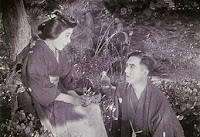Innovative Storytelling:
The Birds took a simple premise—birds inexplicably attacking humans—and turned it into a chilling and thought-provoking narrative. The film's open-ended mystery keeps viewers engaged and talking about its meaning decades later.
Technical Achievements:
Hitchcock employed groundbreaking special effects for its time, using a combination of real birds, mechanical models, and optical effects to create the terrifying sequences. These effects, paired with expert editing, made the attacks feel visceral and immediate.
Atmosphere and Suspense:
Hitchcock's decision to omit a musical score and rely instead on natural sounds and bird calls heightened the tension. The eerie silence between attacks creates an unsettling mood that keeps viewers on edge.
Complex Characters:
The film's central characters, particularly Melanie Daniels (played by Tippi Hedren)
and Mitch Brenner (Rod Taylor),
are well-developed, with their personal dynamics adding depth to the story. Their struggles with fear and survival mirror human vulnerability.
and Mitch Brenner (Rod Taylor),
are well-developed, with their personal dynamics adding depth to the story. Their struggles with fear and survival mirror human vulnerability.
Themes and Symbolism:
Beyond the horror, The Birds explores themes of nature's unpredictability and humanity's fragile relationship with the natural world. Some interpret the birds as a metaphor for societal tensions or suppressed fears.
Cultural Impact:
The Birds became a cultural phenomenon, influencing subsequent horror and thriller films. It cemented Hitchcock's legacy as the "Master of Suspense" and earned critical acclaim for its originality and impact.
Even today, The Birds stands as a testament to Hitchcock's ability to push the boundaries of storytelling and filmmaking, creating a work that feels timeless in its terror and intrigue.
BJ's Movie Clip Drive-In Time.....
BJ 🙈🙉🙊😱













